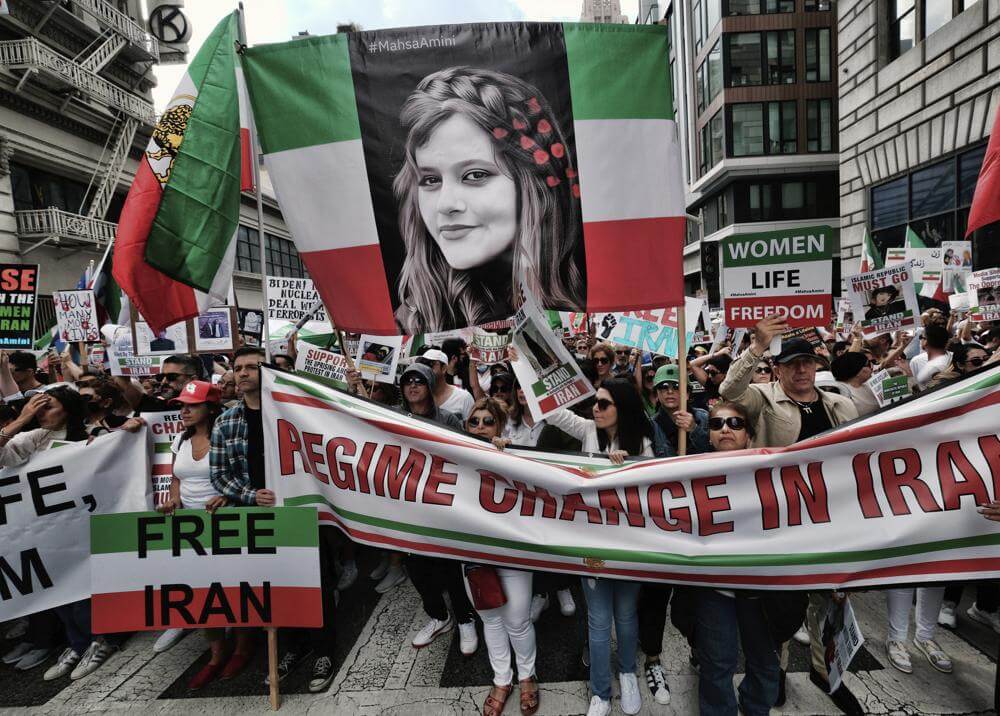In mid-September, a 22-year-old Kurdish-Iranian woman, Mahsa Amini, was arrested by Iran’s religious police for ‘improperly’ wearing her hijab. She was then beaten to death by the morality police, sparking nationwide protests calling for an end to the theocratic regime.
While opinion remains divided on whether this is a prelude to the regime’s downfall, it is clear that Amini’s death has served as a tinderbox at a time when the regime is not as strong as it used to be.
The Iranian regime survives on the principle of “othering,” wherein it portrays women, Israel, Kurdish militants, and the United States as “enemies” of the state. This has historically enabled the government deflect blame for any and all of its failings. However, shortages of daily commodities, rising inflation, and decades of rights abuses and political suppression have pushed civilians to challenge the status quo, openly criticising government and chanting “death to Khamenei.”
Although the United States (US) has continued to sanction Iran, its presence in the Middle East has significantly receded over the past few years, creating a power vacuum in the region. In the absence of a clear and present external threat, the Iranian regime has been left “internally insecure” and without a clear purpose.
As a result, it has doubled down on rhetoric against Israel and Kurds and has further leveraged religion as a means to propagate false consciousness among people and cultivate a perception that the government is necessary to Iran’s existence.
It is further propped up by the enduring strength of institutional apparatus—the Majlis (Parliament), the Guardian Council, and the Expediency Council (or the Assembly of Experts).
In addition, the “Islamic-Marxist alliance”—a unique component of Iranian politics and a direct by-product of the 1979 revolution—remains intact and supports the theocratic regime despite the ongoing protests.
Marxists, or erstwhile members of the Tudeh party or the Fadaeen, provide intellectual fodder to the regime, giving it a veneer of legitimacy. They concur to this day that socialism and Marxism are congruent with Islamic beliefs.
The financial sector, too, remains firmly under the control of the theocracy, which controls state finances. In fact, banks and insurance companies have been in the hands of the state since 1979.
Restricting access to financial resources effectively limits the ability of the people to mobilise, sustain a protest, and pose an existential threat to the regime.
Interestingly, the ‘bazaar economy,’ another crucial component of the state machinery, supports the regime even now. However, that is not to say that this cannot change. The bazaar is not a monolith and bazaar strikes are a common occurrence in Iran. Moreover, bazaaris are more likely to join the protests as the price of essential goods continues to rise and the Iranian currency continues to depreciate. Bazaaris have in the past joined larger movements, such as during widespread demonstrations in 2018.
In addition, this year’s protests have seen the participation of more sections of Iranian society. While demonstrations first began in Kurdish regions, including Kurdistan capital Sanandaj and Amini’s hometowns of Saqez and Bukan, they have also gained significant steam in regions where Kurds are in the minority.
Nevertheless, the sheer might of the Revolutionary Guards means that the regime remains in a strong position. Demonstrations have come at a huge cost. So far, over 300 protesters have been killed, thousands injured, and tens of thousands arrested. Furthermore, an overwhelming majority of Iranian lawmakers have asked the judiciary to issue death sentences to all those who have been arrested. This has left protesters at a crossroads, where they could be further emboldened to resist the regime or surrender under the intensifying pressure. Considering that the regime has been able to supress previous outbursts, notably in 2009 and 2019, it seems likely at this stage that the status-quo will remain largely intact.
How Likely is the Iranian Regime to Survive Ongoing Protests?
The Iranian regime's use of brute force could eventually suppress the protests and leave the status quo intact.
November 11, 2022

Demonstrators carry a large photo of Mahsa Amini during a protest against the Iranian regime, in Los Angeles, on Saturday, Oct. 22, 2022 IMAGE SOURCE: RICHARD VOGEL/AP
